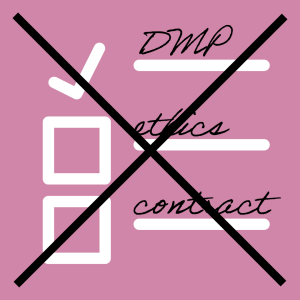Section 3 – Data Management Plans
Data Management Plans: conversations that build trust
Danica Evering and Billie Hu

Missi, Walking the dog in Huron Park, Mississauga, Ontario, Canada, CC-BY 2.0, https://commons.wikimedia.org/wiki/File:Walking_the_Dog_(5972546966).jpg
Imagine you’ve got to leave something important to you in the care of someone new for the week, for example, your dog. If the person taking care of them just took them and throughout the week you don’t hear from the sitter at all, this would be disconcerting, and you’d be worried the whole time you’re away!
Now imagine how it would feel if the sitter let you know in advance their plan for how often your buddy would be fed, when they will be walked. You get to discuss the plan and add details like your pet’s favorite food or toy. Maybe the sitter even sends you regular updates and pictures! You would feel a lot more ok with trusting them.
This is how Hamilton-Wentworth District School Board (HWDSB) Research & Analytics’ David Kanters explains building a data management plan. When you write a plan for how something important—data about people and communities—will be taken care of, it makes everyone feel more secure.
Developing and regularly updating a data management plan builds trust between parties in terms of keeping participants’ information safe. Having a plan for data storage and sharing helps ensure there are no surprises. Community members have access to data through and after the project. Researchers can feel assured that participants fully understand and actively consent to how data will be shared.
What is a Data Management Plan?
A Data Management Plan (DMP) is a short document which describes how you will create, store, organize, document, secure, preserve, and share your research data.
A Data Management Plan Template asks a series of questions to help you think through the project:
 What different files are we collecting? If we do 10 interviews, how much storage space do we need? Who has access to a spreadsheet which has people’s names in it? Where should we keep everything once the project is over?
What different files are we collecting? If we do 10 interviews, how much storage space do we need? Who has access to a spreadsheet which has people’s names in it? Where should we keep everything once the project is over?
Discussing these questions can help anticipate issues—such as cybersecurity breaches and questions about who to share data with—before they occur. Research is also a team effort, so having a conversation about data storage and security as collaborative partners is an important aspect of a project, ensuring participants have a say in where data lives and what data they don’t want shared.
In addition to being a useful tool, communities may also soon encounter a researcher asking them to review or collaborate on a plan as part of a grant. The Tri-Agency Research Data Management Policy[1] states that: “All grant proposals submitted to the agencies should include methodologies that reflect best practices in RDM (Research Data Management).” The Tri-Agencies—Canadian Institutes of Health Research (CIHR), Social Sciences and Humanities Research Council (SSHRC), and Natural Sciences and Engineering Research Council of Canada (NSERC)—are the three major Canadian research funders. They introduced an RDM policy in 2022, which includes a requirement for a Data Management Plan (DMP) document in grant proposals.
Remember, DMPs are living documents, meaning you should update them as needed. They help manage data, support grant applications, and serve as useful tools for your organization.
Why create a data management plan as a community?
Data management plans can be conversations to build trust.

 Data management plans may be a grant requirement but should not just be another form researchers fill out to check a box. Instead, they can be an intentional conversation between researchers and community partners to get on the same page from the start.
Data management plans may be a grant requirement but should not just be another form researchers fill out to check a box. Instead, they can be an intentional conversation between researchers and community partners to get on the same page from the start.
Developed by Cathy Paton and Alexe Bernier, in collaboration with Danica Evering and Chris Sinding, the Art and Research Data Management Plan Template is one of the roots of this toolkit. It facilitates group collaboration among a diverse range of partners, including artists, researchers, research participants, social service workers, community organizers, and community workers.
Their template lays some important groundwork in two critical ways:
- It’s intentionally crafted in plain language to facilitate accessibility and understanding for all parties involved.
- Additionally, it frames the process as conversation as opposed to a more traditional webform style document Research Data Management professionals and researchers might be familiar with. This shift from something static helps foster relationships between partners.
When used in a community context, a conversational plain-language data management plan means researchers and research participants can get on the same page around data management. They can come to a consensus around how data will be stored, documented, and kept secure during its active lifetime, and lay the groundwork for data ownership discussions in advance of the end of the project: building trust among partners.
We might ask each other: “How will we ensure we are meeting our responsibilities to each other (in terms of data maintenance and care)? How will we communicate to make sure everyone is on the same page or has access to the information they need?”
Data management plans empower you with ownership and understanding of the data that is collected from you. It lets you know what data is being used and why (and make recommendations accordingly). Participants can confirm how their data will be kept safe, and how it will be used. Everyone will know who has access to the data during the project. For example, a community might ask for only the Primary Investigator(s) (PI, the lead researcher on the project) to view identifiable information; or they might want to ensure they retain access to datasets and have a voice at the table to determine who gets access to secondary data after the project. Finally, a data management plan allows for a discussion around how long data will be kept and when/if data will be destroyed.
A plain-language data management plan helps researchers and participants agree on data handling, ensuring transparency, security, and trust throughout the project.
The next two chapters—Data Management in Action and the Template for co-creating a Data Management Plan—unpack having an ongoing conversation about data as researchers, community partners, and research data management professionals.
- Government of Canada, I. (2021, March 14). Tri-Agency Research Data Management Policy. Innovation, Science and Economic Development Canada. https://science.gc.ca/site/science/en/interagency-research-funding/policies-and-guidelines/research-data-management/tri-agency-research-data-management-policy ↵

